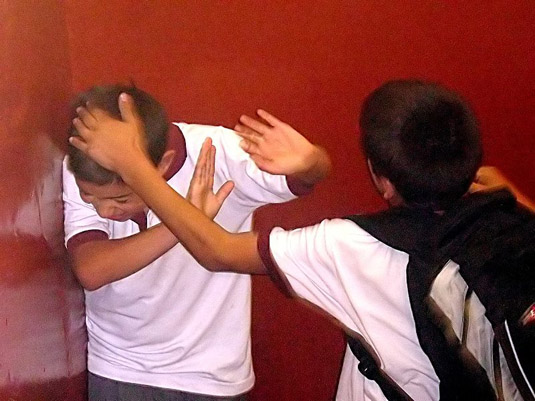Bullying Initiative
 Bullying Information
Bullying Information
What is bullying?
Bullying behavior is aggressive, intentional, involves an imbalance of power, and is often repeated over time. Bullying behavior needs to be understood in connection with the context in which it is found.
Some examples of bullying behaviors include:
- Spreading rumors or gossiping about someone.
- Threatening someone physically or verbally
- Attacking someone physically.
- Demanding money from someone.
- Participating in hazing-related activities.
- Stealing from someone.
- Sexually harassing someone.
Why should we be concerned about bullying?
- Most students will experience bullying as a victim, bully or bystander sometime during their school career.
- Bullying hurts: victims, bullies and bystanders are all impacted by bullying.
- Bullying affects persons irrespective of their health, racial, ethnic, or socio-economic status.
- The effects of bullying can be felt through college.
- Bullying creates a climate of fear among students.
- Students may miss school and/or suffer academically when they have been bullied.
- Bullying may lead to violent behaviors at school such as weapon-carrying and fighting.
- Victims of cyber and other forms of bullying are harming themselves or committing suicide (also known as bullycide).
- Bullying can be related to dating and other forms of domestic violence.
- Youth who bully are at risk for juvenile crime.
How common is bullying?
- Bullying begins in elementary school, peaks in middle school, decreases but continues throughout secondary school. Thirty-five percent of workers report being bullied at work.
- 7,066, 000 or twenty-eight percent of students (ages 12 to 18) reported they were bullied at school in the 2008-2009 school year. Six percent of these students indicated that they had been cyber-bullied on or off school property.
- In another survey, 20 percent of students reported they had been bullied on school property, with 16 percent bullied electronically on or off school property in 2011.
- Nine out of ten lesbian, gay, bisexual, transgendered or questioning youth are bullied at school.
- Bullying is more common among disabled students than among their peers without disabilities.

